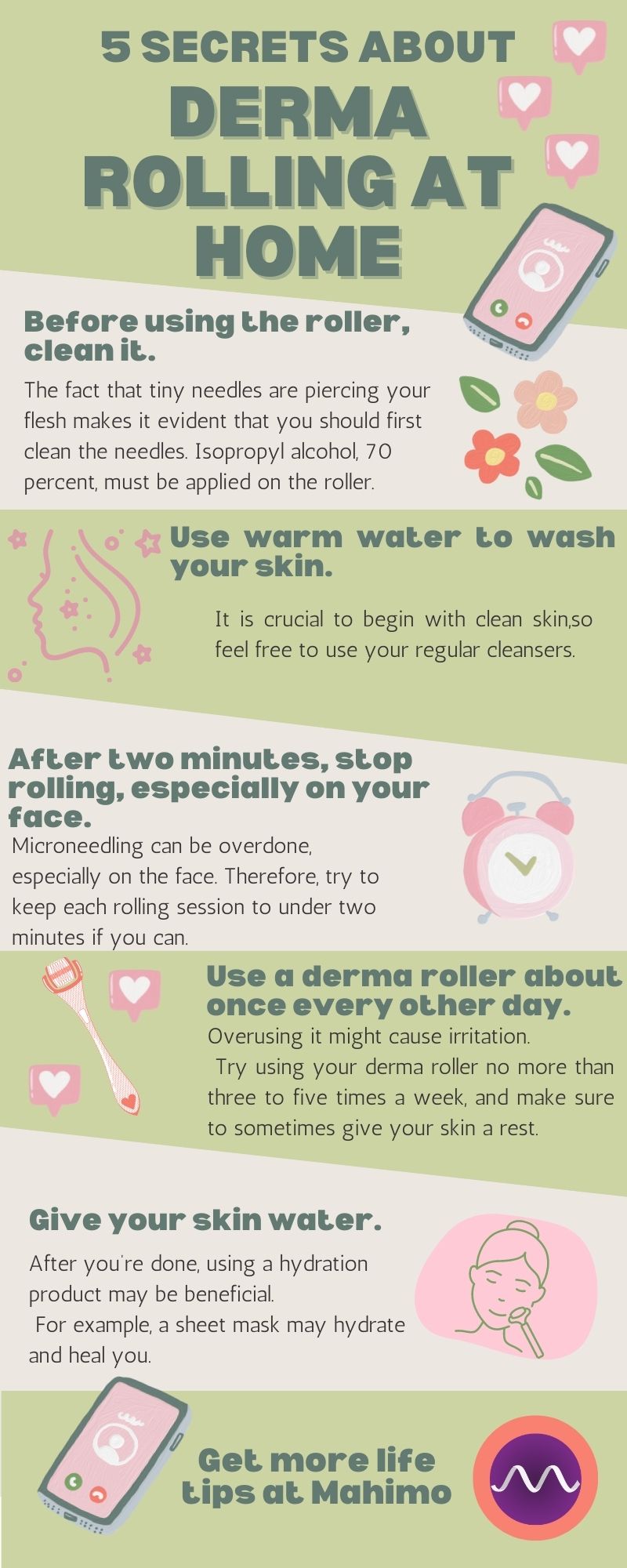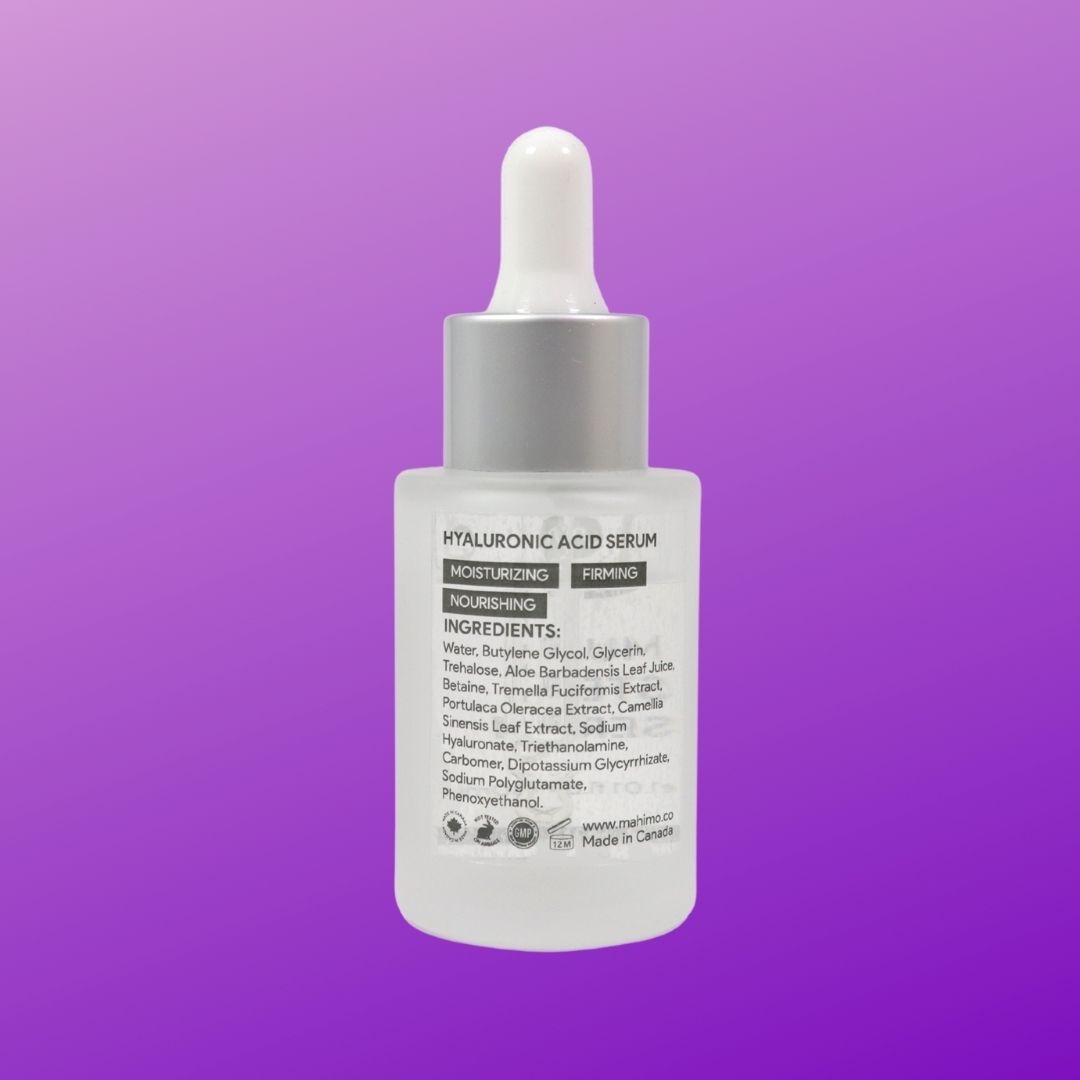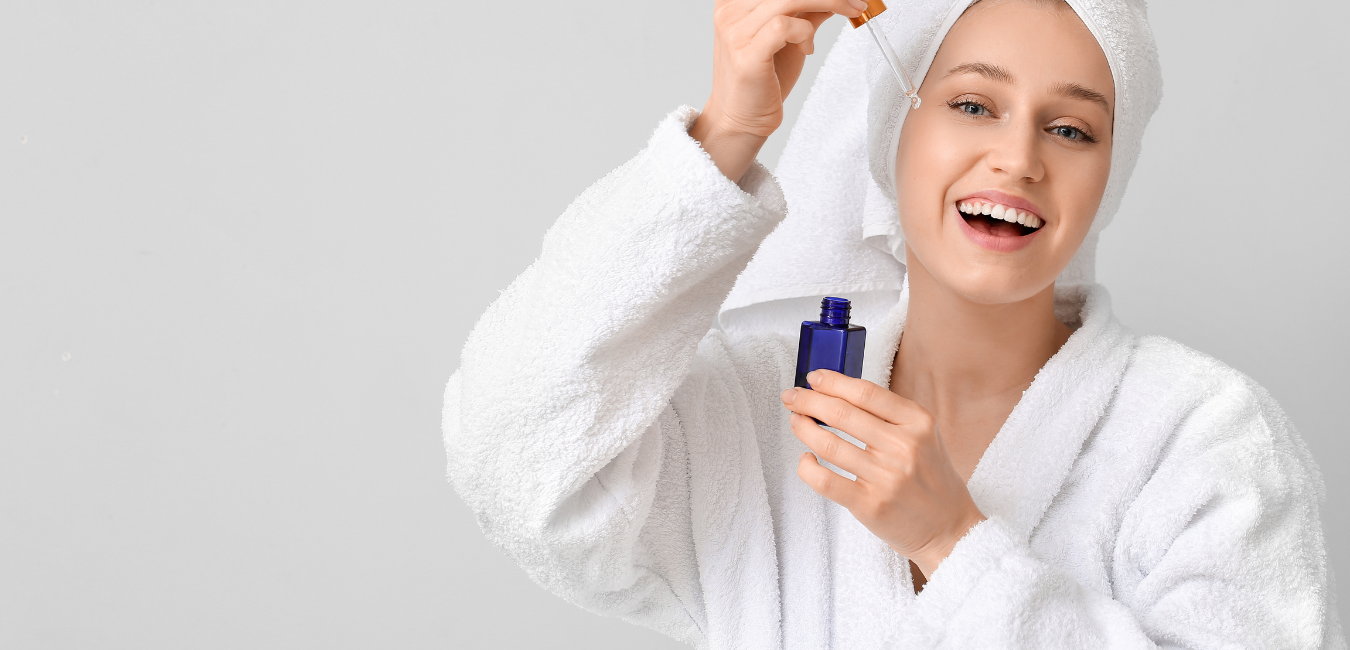15 Secrets About Derma Rolling at Home That Nobody Will Tell You, No 8 will shock you.
Is using a derma rolling trend at home appropriate?
You might be perplexed as to how Jennifer Aniston, a 51-year-old timeless beauty, maintains such youthful-looking skin.
What’s this? She admitted in an interview that she adores microneedling utterly. Her radiant, age-defying skin has been made possible by derma rolling, just like it has for many other celebrities. You have to question if trying it is worthwhile.
You’re at the correct spot if that’s why you’re here. This article covers all aspects of utilizing Derma Rollers for at-home microneedling, including why it’s advantageous, how to pick the best product, dos and don’ts, and much more. Read on!
A derma roller is what?
A handheld gadget is a derma roller. The roller and handle are coated in minuscule needles, which typically range in length from 0.2 mm to 1.5 mm.
Although it might seem frightening, derma rolling shouldn’t hurt. It’s possible that you’ll feel some discomfort, but it should be bearable.
You may use derma rollers on your skin, beard, and scalp. For the benefit of skin and hair, the objective is to increase collagen, circulation, and cellular turnover.
Derma rolling is sometimes used as a hair growth treatment by persons who are losing their hair. At-home derma rolling produces tiny rips in the skin or scalp, similar to microneedling done in a dermatologist’s office, which prompts the brain to start the healing process.
Collagen and blood flow are sent to the region as a result.
Derma rollers are classified as medical devices by the FDATrusted Source and must be registered with them. Derma rolling is most securely done at a dermatologist’s clinic, even if some are now sold for use at home.
Numerous little needles may be found inside a dermaroller. When used, these needles cause microscopic wounds in the skin, which trigger an increase in collagen and elastin production as the wounds heal, leaving your skin tighter and plumper than before.
Additionally, it can dramatically increase ingredient absorption when taken in combination with a serum (as it should be).
Many dermatologists employ a dermapen, an electric microneedling tool that oscillates as it punctures the skin, for a more intensive in-office treatment.
Although these therapies frequently produce significant and quick results, they can also have negative side effects, including bleeding and discomfort. They frequently cost a lot of money as well.
Fortunately, you may use a less expensive derma roller at home and obtain excellent results with routine upkeep. It also necessitates a significantly lower pain threshold.

Be carful
Dermatologists warn that the trendiest cosmetic product of 2018 is unsafe for your skin.
According to Pinterest, the derma roller, a portable microneedling tool used to puncture the skin on the face to make it seem younger, is expected to be the most popular at-home cosmetic product of 2018.
But experts claim it is ineffectual and potentially hazardous in the wrong hands.
Derma rollers are used on patients by aestheticians and dermatologists to improve elasticity, lessen the appearance of wrinkles, and treat discolouration.
Beauty enthusiasts are investing in DIY devices of their own that retail for as little as $10.99 on Amazon to $190 for fancier devices like a Glopro because professional treatment may cost anywhere between $100 and $1,200 each session.
According to Pinterest’s trend report for 2018, there has been a 345 percent rise in postings about “derma rollers” in the last 12 months.
Joanna Vargas, a famous facialist in New York City who has worked with clients like Sofia Coppola and Maggie Gyllenhaal, says that when performed by a skilled technician, it actually addresses suppleness and wrinkles like nothing else.
The product is advertised as improving uneven color, erasing fine lines and wrinkles, and boosting collagen synthesis.
High-tech components like stem cells and epidermal growth factors can also be penetrated with derma rolling.
However, specialists strongly advise against using the instruments at home because they claim that because the needles are too little to make the necessary incisions in the skin, you are effectively hurting your face for no purpose.
Additionally, derma rollers that have not been properly sterilized may contain dangerous bacteria that can lead to infections, breakouts, and even the development of skin conditions like rosacea, which causes bumps and redness on the face, eczema, which causes itchy inflammation spots, and melasma, which causes brown patches of skin.
You run the danger of leaving a scar or causing a problem, but you don’t gain anything.
According to Dr. Doris Day, a dermatologist at Lenox Hill Hospital in New York City, unless you’re using a sterile or disposable one, it can grow germs and yeast and will eventually penetrate the skin.
A dermatologist will first administer a topical anesthetic before beginning a professional treatment. Then, the skin is prepared with collagen-stimulating chemicals and a vitamin C-based brightener. After that, clients commonly bleed after being poked with needles.
Day advises patients to have at least three treatments annually, with four to six weeks between each, in order to see effects.
In order to produce more supple-looking skin, microneedling has emerged as a non-invasive substitute for conventional anti-aging techniques, including injectable Botox, fillers, and laser treatments.
Additionally, famous people like Gwyneth Paltrow, Jennifer Aniston, and Kim Kardashian have lauded the use of derma rollers.
The at-home beauty routine, however, is not popular with everyone. Carolina Dali, a cosmetics artist in New York, used a derma roller but found that it did nothing but make her skin drier.
The professional microneedling treatment was considerably more successful, according to Dali, who also received a roller treatment. “The roller left my skin feeling and looking no different than using a safer alternative like an exfoliant,” she adds. “My skin was shining for days on end when I used it at my dermatologist’s office.
I discovered that I needed less moisturizer and that it sank into my skin more quickly.
Day concurs that a visit to the doctor’s office is your best option and advises speaking with a medical professional before even considering utilizing a derma roller at home.
“I’m not saying you shouldn’t do it, but based on what I’ve seen currently available, there’s nothing that’s secure and dependable. It isn’t currently intended for usage at home, according to Day.
“You can get scars, lumps under the skin, and infections; some of those things can be permanent.”
Chapter 1
Are All Skin Types Suitable For Derma rolling at home?
chapter 1 into
Derma roller
All skin types can benefit from dermarolling, however, individuals with sensitive skin should be cautious about how often they use it (more on that later).
However, those with aging skin will find it especially helpful because it’s a great way to fill in fine lines and wrinkles, thicken and plump the skin beneath the eyes (thereby reducing the appearance of dark circles and bags), and even plump up lips.
Since dermarolling penetrates the skin so thoroughly, it is also a successful method of treating acne scars and discolouration.
How Can I Pick the Right Dermaroller?
Make sure you’re buying one from a reputable retailer first. I’ve bought excellent (and affordable!) dermarollers on Amazon, however I would strongly advise making sure it is well-reviewed and coming from a reputable supplier.
That said, Benjamin’s dermaroller is of a good caliber yet reasonably priced.
The size of the needles must be taken into account next. strongly warns against using anything thicker than 0.3 mm since it increases the risk of skin damage (especially on delicate areas around the eyes and lips).
“Use a bigger needle size if you wish to do a deeper microneedling treatment.
Chapter 2
Is home dermarolling safe?
We get why many individuals are cautious of microneedling
Needles on the skin are a frightening combination.
When considering the “injuries” brought on by microneedling, it’s vital to keep the word “micro” in mind.
The needles are one millimeter or shorter, however they are only effective on your face.
Using needles longer than one mm is preferable if you want to try your thighs or hips.
Derma roller
The skin is not actually harmed by these superficial wounds.
They actually have a lot of advantages (discussed below).
Dermarolling at home is safe and successful if you follow all the recommendations found in this step-by-step manual, as demonstrated by research.

However, keep in mind that if you use this gadget when you have active acne or a skin illness, you’ll merely end up spreading the bacteria over your entire face or body.
Therefore, avoid microneedling on inflamed regions where there is sunburn, rashes, or acne or eczema.
Last but not least, be sure to select a high-quality derma roller!
It goes without saying that you should get one that is sturdy and won’t break while you are using it.
DermRollers‘ medical-grade titanium microneedles make them completely safe!
Have we stated that in many nations, including Australia, DermRollers is the top microneedling roller.
Chapter 3
Utilizing a Derma Roller
Dermarolling definitoin
A derma roller is a little roller with several tiny needles on it that you use to microneedle, or produce tiny holes in your skin.
The theory is that these microscopic holes might encourage your skin to manufacture more collagen, a protein that aids in having skin that looks healthy.
It may also make your skin more receptive to serums and hydration aids.
This therapy is often applied to the face, but it may also be used to other parts of the body, especially those with scarring.
Although cleaning your skin and the derma roller before and after usage is recommended, using a derma roller is quite straightforward.

Important tips about micronddeling at home
1. Taking Care of Your Skin and the Roller
2. Before using the roller, clean it.
The fact that tiny needles are piercing your flesh makes it evident that you should first clean the needles. Isopropyl alcohol, 70 percent, must be applied on the roller. Give it ten minutes.
It doesn’t evaporate as rapidly, thus, 70% is preferable than 99 %. Take it out after 10 minutes of soaking, then shake off any extra alcohol. Allow it to dry in the air for a while.
3. Use warm water to wash your skin.
It is crucial to begin with clean skin.
For instance, you might thoroughly clean your skin by using a mild foamy cleanser on your face. For other body areas, you can use bar soap, shower gel, or water.
It’s important to start with clean skin, so feel free to use your regular cleansers.
Avoid face cleansers that include salicylic acid since you don’t want to start out with anything too harsh. Choose something kinder.
4. If you’re using longer needles, clean your skin.
Infection may result from deeper punctures caused by longer needles.
In addition to cleaning the roller, you also need to clean your skin if you’re using needles longer than 0.5 millimeters. Gently massage 70 percent isopropyl rubbing alcohol all over your body.
Start by using a numbing cream if you’d rather. Although the majority of individuals aren’t sensitive to the needles, if you are, you can use a numbing lotion first, especially if the needles are 1.0 millimeters or longer.
Before you begin rolling, apply a lidocaine lotion to the region and let it sit for 20 minutes.
Before rolling, remove any extra cream with a cloth.
You can also soften your skin by using an emollient to lessen inflammation.
5. Vertically sway.
Start at the area’s outermost point. If you’re doing your face, roll it up from top to bottom, avoiding the region around the eye sockets.
Roll over the same spot once more after lifting it up, repeating this process six times. Repeat the process by moving the roller.
Continue until you have completed the entire region.
You could notice some minor bleeding if you’re using larger needles, such as those that are 1.0 millimeters or longer. However, you should stop if you see more blood than tiny pinpricks.
A smaller needle could be required.
6. Roll on your side.
Starting from the top or bottom, roll over the space horizontally.
Roll over the same region one again after lifting up. Roll it over six times total.
Repeat the technique while moving a little bit down or up until the entire area has been covered.Alternately, you can proceed diagonally, but this may result in uneven needling.
7. After two minutes, stop rolling, especially on your face.
Microneedling can be overdone, especially on the face.
Therefore, try to keep each rolling session to under two minutes if you can.
8. Use a derma roller about once every other day.
Overusing it might cause irritation.
Try using your derma roller no more than three to five times a week, and make sure to sometimes give your skin a rest.
For instance, some patients only receive this therapy every six weeks.
9. Wash your face. Rinse your face after you’re finished.
Since you’ve previously washed your face, you can only use water to clear up any remaining blood stains.
If you’d rather, you may also use a mild cleanser.
10. Give your skin water.
After you’re done, using a hydration product may be beneficial.
For example, a sheet mask may hydrate and heal you. Another choice is to follow up by using an anti-aging or anti-wrinkle serum.
The tiny pores will allow these serums to absorb deeper.
11. Use dish soap and water to clean the roller.
Dish soap works better than other soaps to get rid of the minute skin, and blood flakes stuck on your roller.
Shake the roller in the water after adding the soap and water to a clean container.
12. After usage, sterilize the roller. Rinse out any extra water.
Place the roller in isopropyl alcohol (70%) Before shaking off the alcohol, let it soak for ten minutes.
Before storing it, give it some time to air dry.
Dermatologists warn that the trendiest cosmetic product of 2018 is unsafe for your skin.
According to Pinterest, the derma roller, a portable microneedling tool used to puncture the skin on the face to make it seem younger, is expected to be the most popular at-home cosmetic product of 2018.
But experts claim it is ineffectual and, in the wrong hands, potentially hazardous.
Aestheticians and dermatologists use derma rollers on clients to increase elasticity, reduce the appearance of wrinkles and help with discoloration.
Chapter 4
9 Microneedling Mistakes That Slow (Or Worsen) Your Results
Acne scars, fine wrinkles, and hyperpigmentation are diminished by microneedling because it increases collagen formation in the skin.
It’s often simple to execute, inexpensive, and non-intrusive.
However, some people could make these typical microneedling errors that impede development.
Here is a list of typical microneedling errors to prevent.
The Common Microneedling Errors to Prevent Involve:
- Too much microneedling
- Using an inappropriate needle size.
- Failing to apply sunscreen.
- Microneedling over skin lesions, open wounds, or aggressive acne.
- After microneedling, use irritant skincare products like retinol, BHA, and AHA. Microneedling
Too Aggressively - Using derma rollers of poor quality
- Not updating your microneedling instrument frequently enough
- Using a microneedle tool without first sanitizing it
- Lack of Consistency

Too Much Microneedling
The most typical microneedling error is probably microneedling too often.
You must give your skin enough time to recuperate and repair after each treatment.
Failure to do so can cause our skin harm, including sluggish results, slowed healing, and increased irritation and inflammation.
Be patient; research indicates that collagen might continue to grow in the skin up to a month after microneedling.
You should leave your skin for at least two weeks to recover after using a derma roller.
Even while you should avoid using big needle sizes at home (1mm+) since they can be more harmful when handled improperly, longer needle sizes require even more time for your skin to relax.
Giving two weeks between treatments is good because when needles are rolled, they don’t penetrate the skin at a straight angle but are instead rolled onto the skin, creating bigger cone-shaped micro-holes.
Chapter 5
Absence of sunscreen
Not applying sunscreen after microneedling is another typical microneedling error.
Sunscreen should always be used after derma rolling or microneedling sessions. Hyperpigmentation is more likely to occur if you are exposed to the sun when your skin is still healing from microneedling.
Even if it has been a few days since microneedling, use sunscreen every day since UV damage can still happen.
Use a wide spectrum sunscreen with an SPF of 30 or higher to protect against UVA and UVB rays.
The use of mineral sunscreen is advised. Before applying sunscreen, use a vitamin C product to boost the sunscreen‘s level of UV protection and to act as a barrier between your skin and the sunscreen. Every two hours, reapply sunscreen.
The day after microneedling, I usually advise against going outside since your skin could still be red and slightly irritated, but you can if you wear the proper sun protection.

Microneedling for skin infections, acne, and open sores
Avoid microneedling over active acne lesions or open wounds. Avoid derma rolling close to wounds, warts, psoriasis, open sores, acne, and other bacterial, viral, or fungal skin problems in order to protect yourself from the spread of infection.
Before utilizing the Banisher to microneedle or stay away from the skin lesion or infection entirely, wait for it to fully recover.
Chapter 6
Too much aggressive microneedling
You should not use any excessive pressure when rolling or pushing with the Banisher.
Many people believe that the more force you apply while rolling or stamping your skin, the better the outcome.
Any further pressure applied might harm the instrument unnecessarily as you are only acting as a guide. When using a derma roller, rolling back and forth vigorously might increase the likelihood of tram track markings as a side effect.
To get results, you don’t have to be bleeding.
Expect collagen to proliferate as long as the microneedles are pierced through your skin.
The 0.5mm microneedles in the Banisher 2.0 are sufficient to activate collagen and lighten scars without the dangers of long needles.

Sum up:
Even while dermatologists claim that microneedling has several advantages, much of the research is based on limited trials.
Even less conclusive proof exists, however, users of at-home derma rolling often report favorable outcomes.
However, if you don’t apply it properly, it could damage your skin.
If you want to improve your skincare routine, the method merits additional study, but it’s worth a DIY try.
Consult a dermatologist for help if you have any concerns about the effects on your skin or if you’re looking to handle more complicated problems.

FAQ
All skin types can benefit from dermarolling, however, individuals with sensitive skin should be cautious about how often they use it (more on that later). However, those with aging skin will find it especially helpful because it’s a great way to fill in fine lines and wrinkles, thicken and plump the skin beneath the eyes (thereby reducing the appearance of dark circles and bags), and even plump up lips.
Make sure you’re buying one from a reputable retailer first. I’ve bought excellent (and affordable!) dermarollers on Amazon, however I would strongly advise making sure it is well-reviewed and coming from a reputable supplier.
Dermarolling at home is safe and successful if you follow all the recommendations found in this step-by-step manual, as demonstrated by research. Are All Skin Types Suitable For Dermarolling?
How Can I Pick the Right Dermaroller?
Is home dermarolling safe?










































